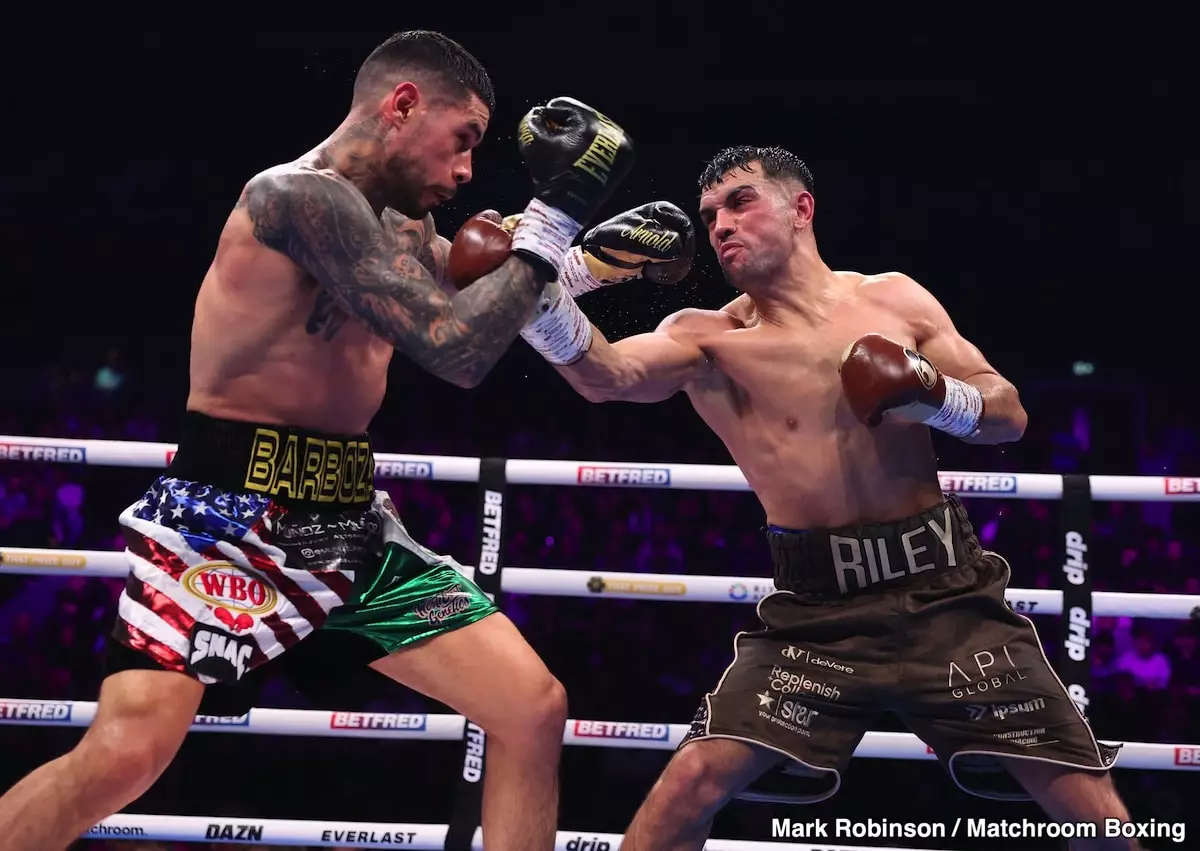Unveiling the Dilemma: The Complex Reality of Pacquiao’s Comeback
Boxing fans around the globe are buzzing with excitement and concern over the recent announcement that Manny Pacquiao is returning to the ring at 46. As he prepares to challenge Mario Barrios for the WBC welterweight title, the boxing community finds itself divided. While some are thrilled to see the legendary fighter back in action, others worry about the implications of his comeback. Among them is Jamie Moore, a former fighter turned trainer, who sees this event through a unique lens because it directly impacts his protégé, Jack Catterall.
Moore’s stance is particularly intriguing due to the conflicting emotions it stirs within him. On one side, there’s admiration for Pacquiao’s illustrious career, built on agility and sheer determination. On the other, there’s a protective instinct for Catterall’s future. This situation underscores a universal predicament in combat sports: striking a balance between ambition and athlete safety. As fans and professionals alike grapple with these concerns, they reflect on what it means to respect both the sport and its players.
Key Takeaways
- Manny Pacquiao’s return has sparked diverse opinions within the boxing world.
- Trainer Jamie Moore faces a moral conflict regarding his fighter’s potential bout with Pacquiao.
- The situation highlights broader ethical issues in boxing, including athlete safety.
The Reluctance of a Trainer
Jamie Moore’s perspective is shaped by his dual role as an admirer of Pacquiao and a mentor to Catterall. The idea of Pacquiao winning against Barrios presents an ethical dilemma for Moore. He dreams of securing a world title shot for Catterall but worries about pitting him against an aging legend. This raises important questions about how fights are arranged, especially when a beloved icon like Pacquiao is involved. Is it fair or safe for both fighters?
Moore’s doubts about Pacquiao’s ability to handle Barrios stem from concerns shared by many in boxing circles—how aging affects performance in such high-pressure situations. At 46, Pacquiao’s choice to return reflects his desire to solidify his legacy despite advancing age. Boxing is inherently risky even for younger athletes, leading to debates over what constitutes sport versus potential exploitation.
Jack Catterall: Caught in a Legend’s Shadow
Jack Catterall finds himself ensnared in this complex narrative as he navigates his own path in boxing. While facing Pacquiao might seem like an opportunity of a lifetime, it comes with significant risks. Catterall is eager for a world title but must consider whether fighting Pacquiao would truly advance his career or simply be seen as a milestone rather than meaningful progress. His previous bout ended less favorably, intensifying his ambitions.
Catterall’s dilemma mirrors that of many athletes who find themselves up against famed legends—does facing such an opponent bolster their career or overshadow their unique talents? For fans and trainers like Moore, there’s genuine concern about how such matchups can affect emerging fighters’ safety and development. Would this fight elevate Catterall’s status or confine him to being merely part of another chapter in Pacquiao’s storied history?

The Future of Boxing: Is the Past a Path Forward?
Manny Pacquiao’s journey post-Barrios victory could spotlight broader issues within boxing itself, especially if he triumphs. Matching legends against rising stars complicates not only logistics but also raises questions on career paths and safety protocols for fighters involved. The allure of lucrative bouts against high-profile opponents like Tank Davis could shape Pacquiao’s next moves significantly.
This decision carries weight beyond personal gain; it affects emerging talents like Catterall who eagerly await their chance at glory. Boxing nostalgics often yearn for past champions’ returns, but at what cost? There are inherent dangers in dismantling early retirements just to sustain legacies—a point Moore poignantly addresses regarding ethical considerations.
The boxing realm now stands at an intersection between spectacle allure versus core values like respect and honesty toward athletes who’ve dedicated their lives to this sport. With Pacquiao poised for another match-up, intrigue surrounds how this saga will unfold—raising discussions that transcend arenas into broader societal contexts involving ethics intertwined with competitive spirit.
Final Thoughts
Manny Pacquiao’s comeback brings excitement mixed with apprehension within both fans’ hearts and industry insiders’ minds alike—as they weigh aspirations against well-being amidst evolving dynamics shaping today’s boxing landscape intricately woven by narratives where past meets present continuously redefining future trajectories therein ultimately challenging us all rethink priorities set forth therein fostering deeper appreciation cherished sport while acknowledging inherent complexities accompanying thereof remain ever-present reminders beauty fragility human endeavor encapsulated therein ultimately inviting reflection upon own journeys parallel quests fulfillment perseverance grace humility courage honor commensurate lifelong pursuits embodied therein eternally inspiring generations follow suit henceforth forging lasting legacies shaping tomorrow brighter shared vision unity love humanity transcending boundaries differences alike fostering hope dreams possibilities abound endless horizons beckon exploration discovery anew together
Manny Pacquiao boxing comeback athlete legacy ethical considerations in sports


Leave a Reply